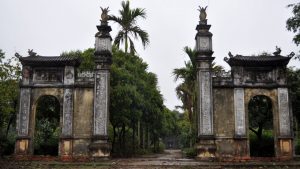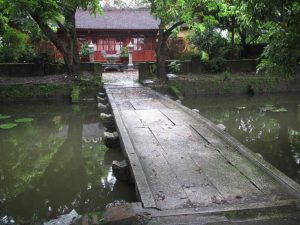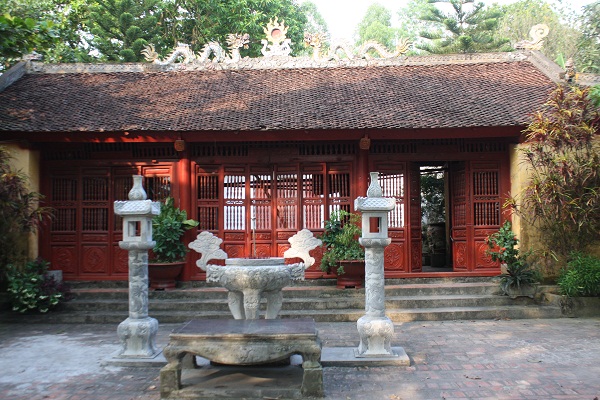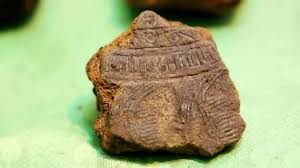Bac Ninh tourism experience, Luy Lau Ancient Citadel is also known as Sieu Loai, Lung Khe, in Thanh Khuong commune, Thuan Thanh district, Bac Ninh province. The citadel is associated with the period when the Northern invaders invaded our country from the Western Han … Tang Dynasty. They built Luy Lau into a center of politics, culture, economy, religion…in order to invade and annex long-term, oppress and exploit our people and assimilate.

But it is here that marked the brilliant victories of our people against the Northern invaders since the early years of the Common Era (the Hai Ba Trung uprising broke the yoke of the Southern Han army).
Luy Lau Citadel has a large-scale rectangular geometric structure with ramparts, moats, gates, watchtowers… with an area of about (3000mx 200m) located slightly in the southwest direction. The east of the citadel lies entirely in Lung Khe village. The west and the north of the citadel borders Tri Qua commune, the south borders Thanh Khuong commune, the west and south of the citadel has Dau river which is a natural moat surrounding the citadel, and at the same time is a very important waterway. important. In the past, the four corners of the citadel had four guard posts called ‘Tu Town’. In the middle of the section facing the Dau River, there was a small house called Vong Giang Lau with the architecture of the Le Mat period.

To learn about the wall sections that have been built over the ages, archaeologists have cut a relatively intact section of the wall in the middle of the southwest corner over 13m long, 2m wide, and 6m deep. It has been shown that: from the face down to a depth of 1.5m, only ceramics dating from Ly – Tran can be seen, at a depth of 1.5 to 4.5m, many architectural relics such as tile heads with decorative patterns and bricks are seen. The building is decorated with Van Chan mono, Cham cage dating from the Luc Trieu – Sui Duong dynasties. By the last layer, many pieces of pots, jars, animal bones and ashes were found, relics characteristic of the products of the late Eastern Han Dynasty, the period in which Sy Nie was present.
At the excavation pits, archaeologists have obtained a large number of artifacts that are architectural materials and daily-life utensils dating from the 1st century BC to the 14th century AD. Household items (ceramics, remnants of the kitchen) and construction materials (bricks, tiles, pipes, etc.) prove the continuous and long-term residence of residents in this area and confirm this. is a large-scale settlement center.
Although Luy Lau citadel dates from the 2nd century AD, has gone through many ups and downs, suffered the destruction of nature and humans, but still retains many ancient vestiges.
Mr. Nguyen Duy Nhat, Director of Bac Ninh Provincial Monuments Management Board, said: Luy Lau Citadel still retains half of the old citadel with an area of 132,258m2 in the southwest. The East has become the residential land of Lung Khe village. Inside the citadel are Phi Tuong pagoda and Binh pagoda. The temple worships the statue of Sy Niep, dating back to the Le Nguyen Dynasty.
The earth wall is still about 1-2m high, the wall surface is 1.5m wide. In the citadel area, there are still temples, tombs, pagodas, four towns (4 mounds of earth rising above the citadel). In particular, the ancient relic that still exists from the 2nd century is the stone bridge, the entrance to Sy Nie temple. This is a tourist destination in Bac Ninh that many tourists come to visit and offer incense.

Especially located in the area of Luy Lau ancient citadel (Thanh Khuong commune, Thuan Thanh district, Bac Ninh province), now the stone bridge of Lung Khe temple is one of the most beautiful ancient stone bridges in Kinh Bac still preserved. now. The bridge crosses a pond in front of the temple and is the way to enter the main temple area, built during the Le Trung Hung period (16-18 centuries), restored in 1843, under the reign of Thieu Tri of the Nguyen Dynasty. The bridge is made of monolithic green stone including 7 spans with a length of 10m38, the width of the bridge deck is 1m67, the average length of each span is 1m40. The bridge deck is paved with 20 stone panels, each span has three faceplates, the middle plate is flat, the two side panels create embossed edges on both sides to form the bridge. The bridge has 8 girders with an average length of 2m25, each girder is supported by three pillars, 24 in all. The two sides of the bridge girder are decorated with twisted rattan patterns.

Currently, the ancient river is shrinking due to the daily activities of the people. The wall is always in danger of being invaded and destroyed by humans… Luy Lau Citadel needs to be invested and restored soon in order to preserve the remaining historical value with time, so that future generations can understand a time. history of the ups and downs of the country.
With those great historical values, Luy Lau citadel was soon invested, researched, protected and ranked by the state since January 13, 1964 according to Decision No. The ancient river is shrinking day by day due to people’s activities. The wall is always in danger of being invaded and destroyed by humans… Luy Lau Citadel needs to be invested and restored soon in order to preserve the remaining historical value with time, so that future generations can understand a time. historical period of the country’s ups and downs.national history.
Source: Collected internet.